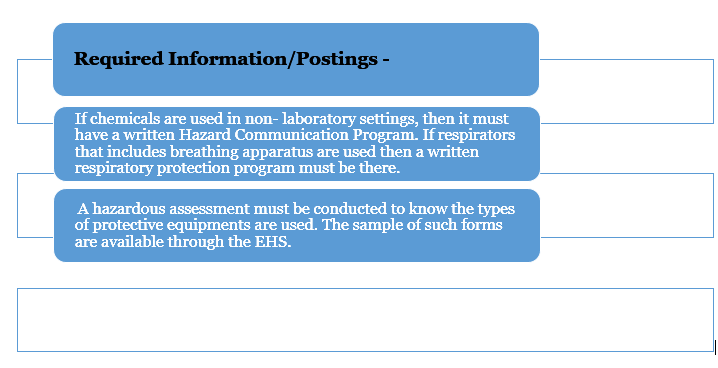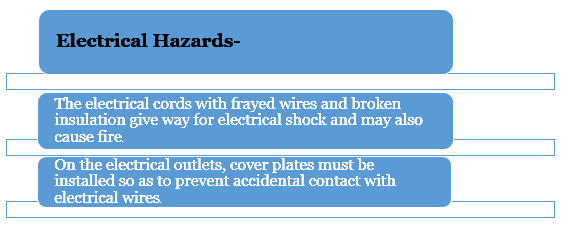![]()
30 Mar, 2024

Before proceeding to understand how the internal audit of laboratories is done, I am sure that the importance of laboratory testing is already understood by the world at large, owing to the recent outbreak of COVID-19 across the world. Though there are many controversies relating to how the virus was spread, you get the idea that if proper testing is not done in the laboratory, it can very well result in mass destruction of the population at large.
Controlling something that one is able to see and witness is easy, but when we specifically come to medical laboratories, we cannot see or directly feel the bacteria. Hence, if any spread of dangerous bacteria is done, it is nearly impossible for the human race to take control of the same. We, the human race, have been the witness of the corona spread across the world and its implications. We are living in a time when we are reaching the moon, but at the same time, it has become nearly impossible for us to control one virus. Hence, the importance of laboratory audits is very apparent. We will now know how this type of audit is conducted.
There are two principles on which the laboratories are based. They either perform analysis or tests in some organizations, or they work as a third party to perform tests on the samples provided by the clients or customers. A laboratory audit is an assessment which is performed in order to demonstrate whether the laboratory’s operations are as per the accreditation regulations, like ISO 15189 and ISO 17025. The detection is also made if there are any deviations in the processes that might affect the quality of the system in the operations of the pharmaceutical companies.
The aim is to check the conformity of the laboratories with ISO 9001. If the laboratory has not maintained process documentation, the auditor will use the general standard requirements of ISO 9001 in order to review the process as in clause 8. The investigation should also be done to confirm that the records provide evidence and the process meets the requirements.
There are six types of laboratories, as defined below-
A medical laboratory refers to the place where medical professionals or doctors perform tests on the samples received from the patients so as to assist them with the information relating to their health. It is commonly found in clinics, hospitals and pharmaceutical companies.
These laboratories are unfairly characterized as outdated. It provides the backbone for many companies and also provides support to all departments, which is visible in modern-day research operations in industries like pharmaceuticals and technology.
It is one of the most useful laboratories that exists. It is also used to create substances that do not usually occur in nature, to purify the substances that already exist or extracted from something through processes like distillation with boiling point between 315 -heretical-300 Kelvin.
The production of chemicals takes place both legally and illegally, meaning that it has potentially harmful side effects on humans when incorrectly handled. The amount of the use of solvents should also be tracked down so that no mishandling takes place due to the lack of safety protocols.
Scientists use biosafety laboratories to study contagious materials more effectively. These facilities are designed not only for the protection of the researchers but also to prevent microorganisms from entering the environment. The focus is on working with viruses and bacteria; it can be classified as ML-I, ML-II and so on.
It is a type of science which is often studied in the laboratory. Research in bio labs is conducted on bacteria, fungi, etc. One more type of bio lab is botany, where the test is conducted on plant varieties. The research is different in different countries. For instance, in the Netherlands, bio labs are used to figure out how to grow crops in a better way.
It is more than a place for scientists to do their experiments. Investigation in physics laboratories is also done pertaining to how objects behave under pressure.
There are certain steps that are followed in order to conduct proper analysis and test, as given below-
In order to perform these basic operations, there are many factors that should be taken care of in order to give effective test results. It can include the documentation of the test procedures, the competence of personnel who are performing the tests, testing equipment fitness, the environment where the test is to be performed, checking whether the test results are traceable or not, etc.
There are a few constituents mentioned below that should be incorporated into an ISO 9001 Laboratory audit checklist:
There are mainly two types of laboratory audits, namely external laboratory audits and internal laboratory audits.
These types of audits are conducted by third-party agencies outside the laboratories. Their main aim is to get the certification or accreditation in order to enable the laboratory to operate in the relevant markets. There are certain requirements, and If the laboratory offers testing services for a medical device company and is planning to start its business in EU member countries, in that case, it must invite the accreditation first. If the accreditation is received, then only the company would be allowed to start the business and not otherwise.
This type of audit, as the name itself suggests, is performed by the members of the same laboratory who are working in different departments. The purpose of internal audits is to perform a quick assessment of the quality practices of the laboratory. It is basically a preparation for conducting external audits, and it also identifies any critical non-conformity which might create severe consequences during the conduct of external audits.
The NABL, which is the National Accreditation Board for Testing and Calibration Laboratories, prescribes certain qualifications to hire the expert for NABL as mentioned below-


In order to make sure that the laboratory is audited-ready, the employees of the laboratory must align with the prevailing rules and regulations of the country so that no auditor can issue warnings or non-compliance to the laboratory. Unannounced audits are also conducted sometimes, which means conducting an audit without informing the laboratory. Below are some of the steps to ensure that no non-compliance is done on the part of the laboratory-

We all are aware that India is the fourth largest country worldwide, having the highest number of SARS-CoV-2 cases. It was the case despite conducting 119 tests per million people. Whereas in countries like Russia and the United States, 1518 and 2074 tests were conducted per million population. The rates of testing were also insufficient in India because of the legal scenario that regulates medical testing.
The private labs in India are regulated under the Clinical Establishments Act of 2010. These labs have been functioning under self-imposed and market-led norms. But, during the spread of the coronavirus in the second phase, the Indian government had to grant discretionary power to ICMR for regulating the testing strategy.
The labs have to comply with the State Shops and Establishments Act, which relates to working hours, holidays, etc. They also have to obtain registration under the Biomedical Waste Management Rules of 2016. The reagents and diagnostic kits used by the labs are explained under the head ‘drugs’ under the Drugs and Cosmetic Act of 1940. It has to be approved by the CDSCO (Central Drugs Standard Control Organization). The NABL (National Accreditation Board for Testing and Calibration Laboratories), which is an autonomous body, prescribes the criteria for different types of labs. In India, out of all the labs that exist, nearly 4,000 labs have NABL accreditation.
The purpose of accreditation is to assure the quality of labs; therefore, in order to ensure better quality testing, some reputed laboratories prefer obtaining certifications from International Accreditation bodies in addition to NABL accreditation.
READ E-Commerce Audit ProceduresHence, the need for laboratory audits is clearly there. First, we have to make sure that the environment we live in is safer for us and our families. For instance, the laboratories that investigate the plants do this so as to make sure that we inhale fresh air. This type of audit also ensures that the environment we live in is free of bacteria and viruses that may be harmful to our bodies. However, we still lack proper audits in this area, as witnessed during the time of the coronavirus outbreak. However, after the COVID-19 case, the services of laboratories have been made better owing to the disaster that the coronavirus brought to the world.